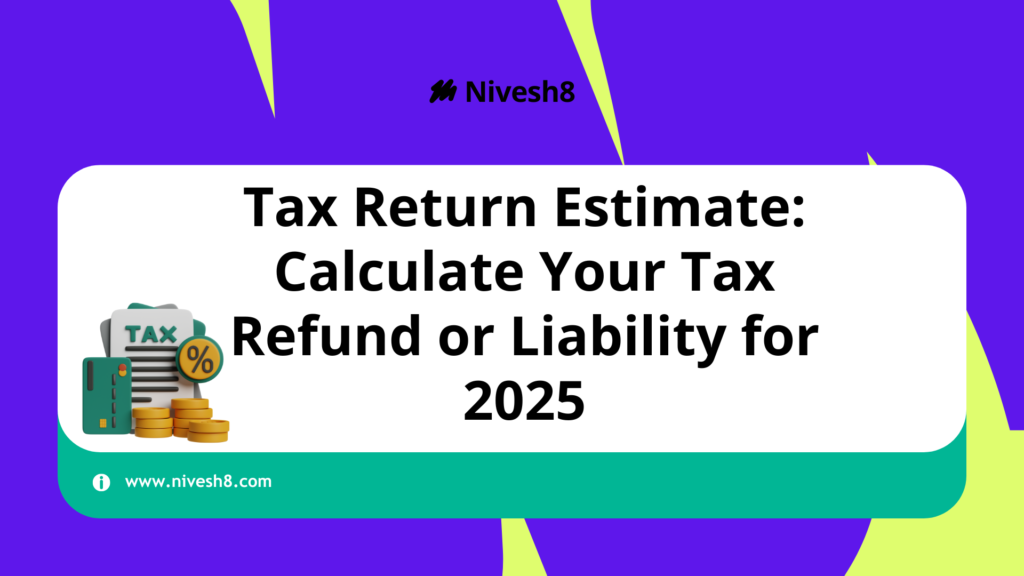Especially if you can project your tax return ahead of time, filing taxes doesn’t have to be taxing. Before you file your income tax return (ITR), a tax return estimate clarifies whether you owe taxes or are qualified for a refund. Examining your income, deductions, and tax credits will help you to clearly understand your tax situation and guide your planning.
This page will enable you to quickly estimate your tax return whether you’re wondering how much tax you owe or how much refund you will get.
An Estimate of a Tax Return Is What?
An estimate of your tax due or the refund you could be entitled to following income tax return filing is known as a tax return estimate. Consider:
- Overall income from employment, business, or another source
- Deductibles and exemptions
- Tax credits and rebates
- Advance TDS or tax paid already
This estimate guarantees you won’t have last-minute unanticipated tax obligations and helps with better financial planning.
How Can One Determine Their Tax Return Estimate?
First: Find Your Total Income
Add all of your income:
✅ Salary or wages (per Form 16)
✅ Business or freelance income
✅ Rental income from real estate or property
✅ Capital gains from stocks or real estate
✅ Interest from fixed deposits and savings accounts
Second: Deduct Eligible Deductions
Use deductions under to lower your taxable income:
- Section 80C: Up to ₹1.5 lakh, investments in PPF, EPF, ELSS, NPS, life insurance
- Section 80D: Family and personally based health insurance rates
- Section 24B: Deductions in home loan interest
- HRA & LTA: Should one be qualified under pay components
Step 3: Decide Between New and Old Tax Systems
Old Tax System with D Deductions:
- ₹ 2,50,000 income – No tax
- ₹ 2,50,001 to ₹ 5,00,000 – 5% tax
- ₹ 5,00,001 to ₹ 10,00,000 – 20% tax
- Above ₹ 10,00,000 – 30% tax
New Tax System (Lower Rates Without Deductions):
- ₹ 2,50,000 income – No tax
- ₹ 2,50,001 to ₹ 5,00,000 – 5% tax
- ₹ 5,00,001 to ₹ 7,50,000 – 10% tax
- ₹ 7,50,001 to ₹ 10,00,000 – 15% tax
- ₹ 10,00,001 to ₹ 12,50,000 – 20% tax
- ₹ 12,50,001 to ₹ 15,00,000 – 25% tax
- Above ₹ 15,00,000 – 30% tax
Fourth Step: Review TDS and Advance Tax Paid
You are qualified for a refund if TDS deducted by your company or bank exceeds your tax liability.
Should your TDS be less than your tax owing, you must pay the remaining tax before claiming.
Step Five: Get Your Estimate of Your Tax Return
You can find:
✔ Total taxable income after deductions by applying the above specifics
✔ TDS paid and any outstanding balance or refund
✔ Tax due depending on your chosen regime
Why Should Your Tax Return Be Estimated?
✔ Avoid Last-Minute Surprises – Advance knowledge of your tax due
✔ Facilitates Financial Planning – Save for tax returns or payments
✔ Prevents Late Fees – If necessary, pay advance taxes on schedule
✔ Maximizes Refunds – Provides means to maximize deductions for a bigger refund
Final Thoughts
Estimates of a tax return guarantee your readiness for tax season and help you avoid unanticipated debt. Estimating your return ahead of time helps you better manage your money whether your expectations are for a refund or additional taxes.
To properly plan, try hand calculations using the above or an online tax estimator.



